|
The Ironstone Works Part II , Blisworth, Northamptonshire, UK. All pictures are presented at relatively low resolution. Printed below each image is the photographer's name, if known. |
|
|
Back to INDEX page Part I This is Part II Part III |
|
|
Most of the pictures in part I show conditions in manual pits c. 1880 -1920. Part II relates to the re-opening of pits in the 1940's - an activity which continued until 1968.
18-12 This small loco, Blisworth No. 1, was used to transfer ironstone from the fields near Gayton Wood Farm into the parish of Gayton to be off-loaded onto wagons on the Banbury branch line. It was built by Andrew Barclay, Works No. 2143 in 1942 and scrapped by G.C. Cohen in September 1969 - a company whose business was at the site of the Cransley Furnaces off Jct. 8 of the A14 (there is still a scrap dealer there)
|
|
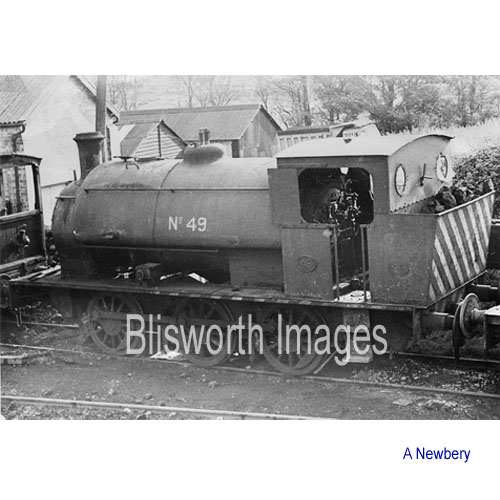 |
18-12a Loco no. 49 at the sheds near Gayton Wood farm, pictured in about 1965. It was built by Hunslett Engine Co. Ltd, Works No. 2082 in 1940, shipped from Ebbw Vale Steelworks in September 1962 and scrapped in March 1968. |
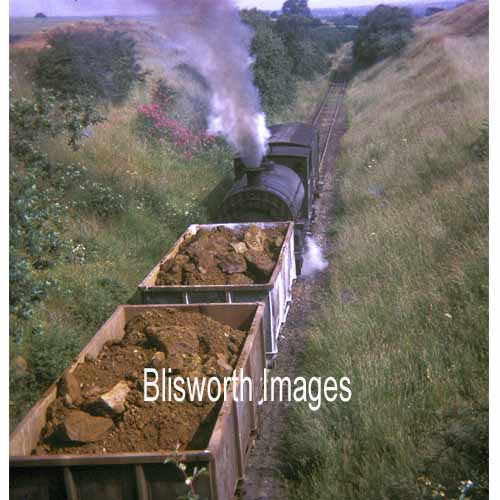 |
18-12b The loco is pushing the trucks towards a railway transshipment point in Gayton parish. The picture was taken from the concrete bridge under the Gayton to Blisworth road |
|
18-13 Two diggers in the field above the village, towards Gayton Wood farm, are shown here. The diggers were powered by electricity and the cables leading to a transformer house can be seen in the left of the trench. It was common for one digger to remove limestone and soil over-burden while the other dealt with loading ironstone into the rail wagons.
|
|
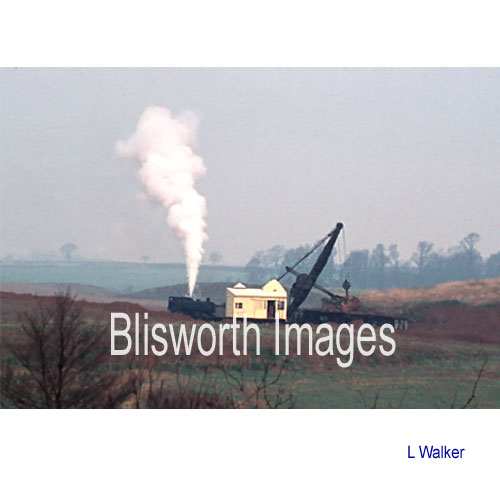 |
18-14 Date 1960's - near the
village. the machine in this picture and the one above is,
according to Steve Purcell,
Type 490 D Shovel caterpillar
Ransome & Rapier Works number 1256 of 1941
2.5 cu.yds. bucket
36' boom
Source: From Finedon Quarries c1954
Disposal: Scrapped unknown date
|
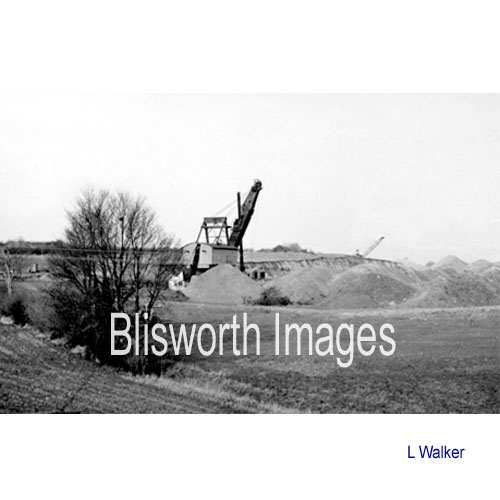 |
18-15 Same location but different machine. |
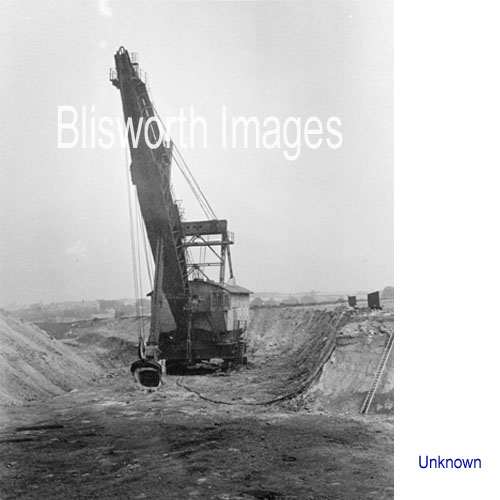 |
18-16 The electric supply cable for this large machine is visible in the foreground extending up the right edge of the pit. |
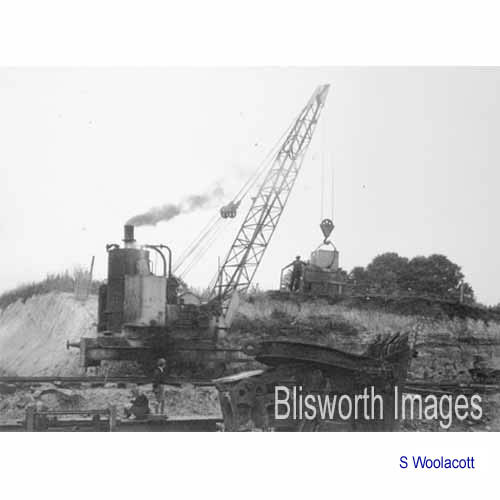 |
18-16a This picture gives an impression of the size of the drag bucket shown above. Here it is tipped onto its back and two children are nearby provide the scale. The rail-mounted crane is a "walking dragline" that was also used to remove overburden. The date of this picture is around 1960. |
| 18-17 This railway engine inspection shed is thought to be near to Gayton Wood Farm. Date probably c. 1950. | |
| 18-18 This picture and the next
one require historic comment. The somewhat shallow holllows which
appear partly regrown with weeds were actually made in 1942/3 when RTH
came to the these fields in a war effort project to raise iron ore for
the northern furnaces. In the one year of work this long gully
(see next) was all that was dug probably because they had come with an
insufficiently large digger to remove a massive thickness of limestone
overburden.
The date of this photograph is 1957 or even slightly earlier because it shows the establishment of a large machine that has started work extending the gully, re-opening the mine. It has done so behind the scene that has been photographed, in the direction of the railway, visible below, which acquires a branch. Tonks maps will explain. Later on the gully is renewed in its full length so that at the lower end the machines approach the village quite closely. The gullies are worked out towards the south-west, ie. right for this viewpoint. |
|
| 18-19 | |
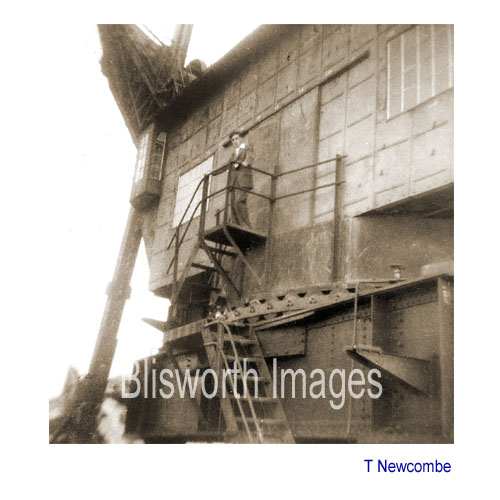 |
18-19a How the view from a high point was achieved for the previous two pictures. There are no prizes for identifying the Blisworth character from 1956! |
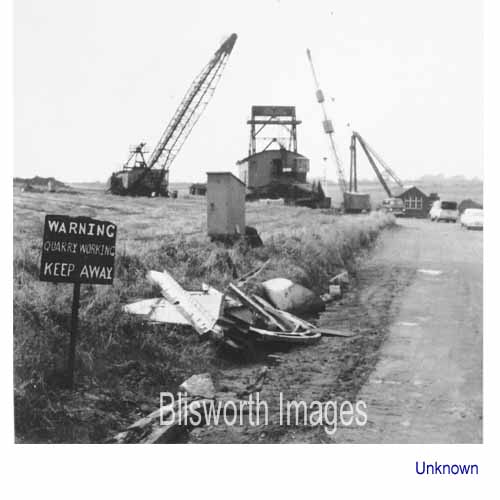 |
18-19b A general view of the quarry field from the access off the Towcester Road. |
|
18-20 The dominance of the machine at its nearest approach (here exaggerated by a long-focus lens) was both visual and through background noise - a rumbling, grinding screeching.
|
|
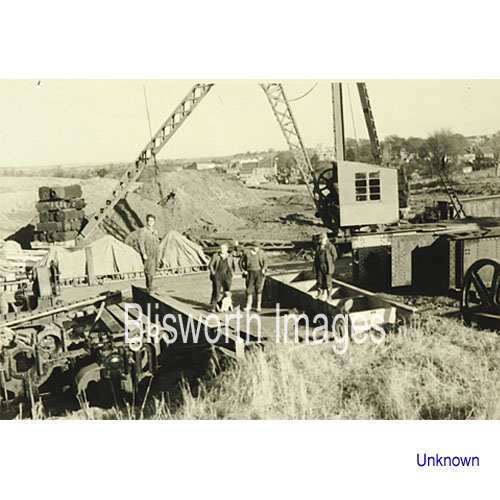 |
18-21 A gang of Blisworth men were employed to dismantle equipment and re-level the ground after mining ceased in 1968. |
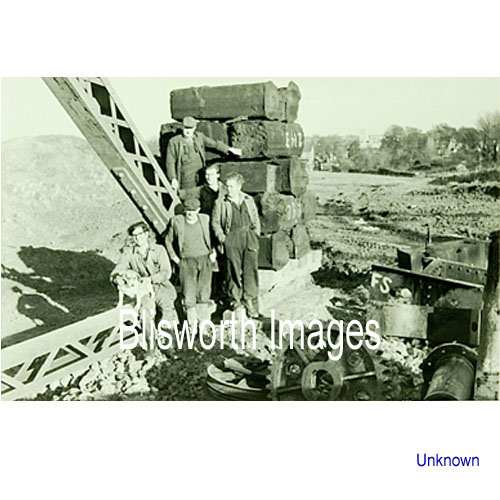 |
18-22 |
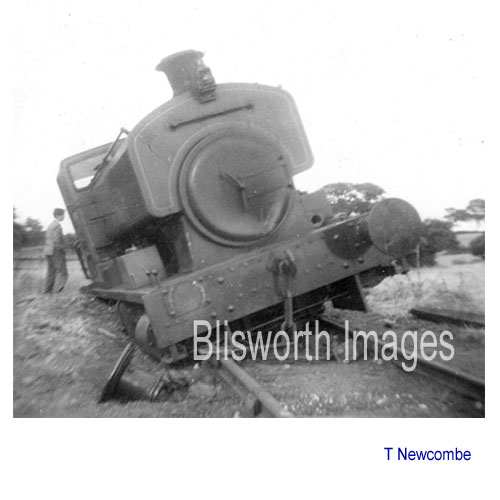 |
18-23 This is thought to be
"Blisworth No. 2" after a de-railing accident in the
1950's. Note that the poor machine has one buffer plate amputated.
|